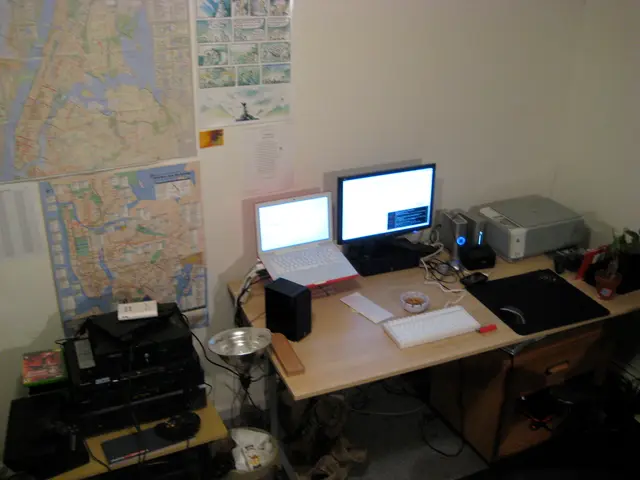Technique in Artistry - Maximizing Impact (Avoiding Monotonous Pieces)
In the world of art, understanding and effectively depicting form is a crucial skill that has been refined over centuries. One artist who serves as a prime example of form simplification is Albrecht Dürer.
Learning to see basic shapes and forms is an active skill that requires training to tune out noise and information. This process involves focusing on the major forms such as sphere, cube, cylinder, and cone, which have mathematical structure. Interestingly, a cube without perspective looks like a square, while a cone without perspective is a triangle.
For those looking to improve their ability to use form in paintings, several tips can be helpful. Practicing drawing perfect spheres, cubes, cylinders, and cones is a great starting point. Simplifying reference photos or master paintings down to basic shapes and forms can also be beneficial. Incorporating figure drawing into practice is another effective way to hone this skill.
Organic forms, which are irregular and random by nature, can often be simplified into geometric forms. This means that even the most complex subjects can be broken down into manageable shapes, making them easier to depict.
In practice, it's more effective to look for geometric forms in a subject because they are easier to measure and draw. Not all areas need to be painted with a sense of form; flat areas (such as floors and walls), distant objects, and unimportant areas can be left as shapes.
To effectively depict form in art, several key techniques are employed:
1. **Shading and Tonal Values**: Shading is essential for rendering form by varying light and dark values to show volume and depth. Artists often work from dark to light, starting with the darkest shadows to define structure, then applying midtones and highlights to build up three-dimensionality gradually.
2. **Cast Shadows**: Cast shadows anchor forms in space and enhance the illusion of depth. They occur when an object blocks light and projects a shadow onto adjacent surfaces, creating a spatial relationship between the form and its environment.
3. **Contour Lines**: Contour lines define the edges and surface curves of forms, helping to outline shapes and suggest volume even without shading.
4. **Texture Variance**: Varying texture—using techniques like layering, brushstrokes, or material manipulation—can convey different surface qualities and enhance realism or abstraction.
5. **Color Variance**: Color shifts help depict form by indicating how light and atmosphere affect surfaces. Warm and cool colors can define planes, shape contours, and suggest material qualities.
By mastering these techniques, artists can convincingly render three-dimensional forms on two-dimensional surfaces, whether working realistically or abstractly. Artists from classical to contemporary styles manipulate these elements to achieve nuanced visual expressions of form.
Examples of artists who have demonstrated these techniques include John Singer Sargent, who used color variance to reiterate form in his painting, and John Constable, who used texture variance to do the same. Gustave Caillebotte is another artist whose work demonstrates the use of shading to pick up changes in light and shadow. Even Leonardo da Vinci used contour lines to explore and get a feel for forms in his work.
In summary, whether you're painting a distant object or a detailed portrait, focusing on shading, cast shadows, contour lines, texture variance, and color variance can help you effectively depict form in your art.
To enhance one's landscape painting and effectively depict form, learning about shading, contour lines, cast shadows, texture variance, and color variance is essential, as these techniques allow artists to render three-dimensional forms on two-dimensional surfaces. Additionally, pursuing education and self-development in this area can help improve an artist's lifestyle, as mastering these skills contributes to a better understanding of art and the ability to create compelling artwork that connects with others.







